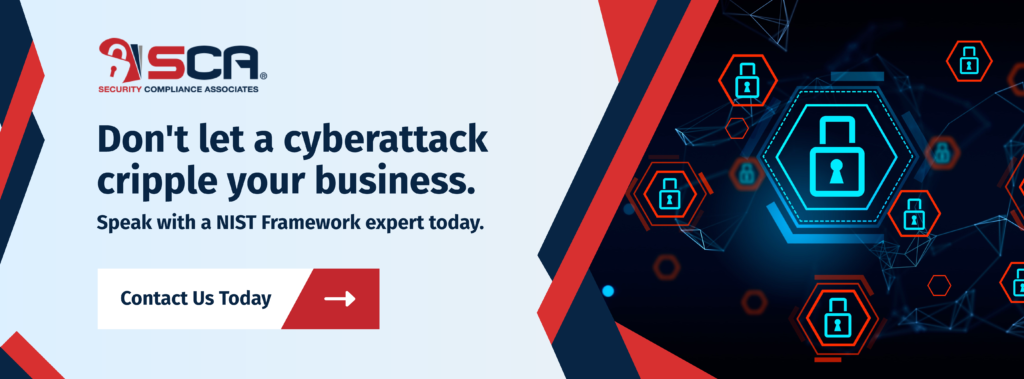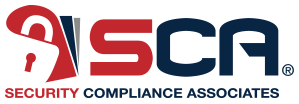
What are the 5 Domains of the NIST Cybersecurity Framework?
5 Domains of the NIST Security Framework
Besides resulting in considerable financial losses, cybersecurity threats can also adversely affect reputation or cause service outages that can damage an organization’s market position. For security savvy businesses, the NIST Cybersecurity Framework and its five-point plan helps these organizations understand, manage, structure, and minimize cybersecurity risks.
While implementing this NIST Cybersecurity Framework is voluntary, it’s based on the best cybersecurity practices. The these practices are drawn from CIS CSC, COBIT, ISA, ISO 27001 and NIST 800-53. Also, most of the cybersecurity topics covered in this framework are typically common to every sector. Even so, every industry and organization must consider their unique issues and themes to focus on by conducting a NIST Cybersecurity Framework assessment for best results.
5 Domains of the NIST Security Framework
The five domains in the NIST framework are the pillars support the creation of a holistic and successful cybersecurity plan. They include identify, protect, detect, respond, and recover. These five NIST functions all work concurrently and continuously to form the foundation where other essential elements can be built for successful high-profile cybersecurity risk management.
1. Identify
Organizations must first fully understand their current environment to ensure they can successfully manage arising cybersecurity threats at various levels, including data, systems, and assets. Conducting a NIST Cybersecurity Framework assessment will help identify your risks within your industry or business context.
Organizations must comprehensively inventory and evaluate their assets to determine what they own and how the various pieces are connected and what responsibilities or roles employees have regarding their management. Here are the key categories in this identification function:
- Business environment – Establish the organization’s mission, objectives, general activities, and stakeholders.
- Asset management – Identify devices, data, personal, facilities, and systems used to conduct the core company purposes.
- Governance – The procedures, processes, and policies necessary to manage and monitor the company’s risk, legal, operational and regulatory needs.
- Risk assessment – Understanding the specific cybersecurity risks that may face organizational assets, operations, and employees.
- Risk management plan – Establishing a company’s risk tolerances, priorities, and constraints, and using that data to support critical operational decisions.
2. Protect
Once organizations have a better understanding of their cybersecurity risks, they can evaluate whether their cybersecurity safeguards offer sufficient protection, or if changes or additional controls are appropriate to ensure delivery of services. Hence, the NIST Cybersecurity Framework’s protect domain underpins the capability to contain or limit any impacts arising from cybersecurity events.
Below are critical categories of protection designed to deal with the effects of cyber threats:
- Access Control – Limit access to your network and assets to ensure users have the least access possible they need to do their job roles.
- Training and awareness – Provide sufficient training and cybersecurity awareness to empower your team members to perform their responsibilities in alignment with your company’s information security compliance policies and procedures.
- Data security – Managing the organization’s critical data based on your risk assessment strategy designed to safeguard the confidentiality, availability, and integrity of critical data.
- Information protection procedures and processes – The processes, policies, and methods used to protect the company’s information systems and assets effectively.
- Maintenance – Includes repairs of the information system elements done based on the company’s procedures and policies.
- Protective technology – Using a mix of automated and manual tools to guarantee optimal information security and better resilience
3. Detect
Speed is critical in threat mitigation. The detection part of the NIST Cybersecurity Framework defines the essential processes necessary to identify cybersecurity events. Timely detection is crucial as it allows the proper response to be initiated.
- Detecting any anomalies – Ensuring all events or anomalies are quickly detected
- Continuous monitoring – Tracking your information and assets constantly to detect cybersecurity events rapidly
- Detection processes – Maintain your detection processes to guarantee their availability and reliability to detect any anomalies
4. Respond
The NIST Cybersecurity Framework also includes the response domain that involves boosting the capacity of containing the adverse effects of cybersecurity events. It consists of all activities used by an organization once cybersecurity threats or incidents are detected.
- Response planning – Ensure timely response using properly executed procedures and processes.
- Communication – Covers response activities related to communication between external and internal stakeholders
- Analysis – Includes the reviews done while response actions are underway to make sure correct procedures are followed
- Risk mitigation – The activities that prevent the cybersecurity event from expanding while eradicating or neutralizing its effects
- Improvements – Every time an organization deals with response activities, it presents new opportunities for strengthening the process by reviewing the lessons learned and making improvements.
5. Recover
This domain of the NIST Cybersecurity Framework allows you to highlight the best processes to achieve business resilience. It seeks to quickly restore impaired services, capabilities, and capacities to ensure everything is working as intended.
- Recovery planning – Organizing recovery procedures based on priority.
- Improvements – Review of events and response to update the recovery strategy.
- Communication – Coordinating communication with all stakeholders to ensure the successful restoration of services.
Contact SCA for More Information About the NIST Cybersecurity Framework
Learning about the NIST Cybersecurity Framework domains can help you review your company’s cybersecurity posture to make the necessary changes for cyber threat prevention. Let SCA help you with a thorough NIST Cybersecurity Framework assessment to determine your current cybersecurity state and create a roadmap to achieve your desired cybersecurity state!


